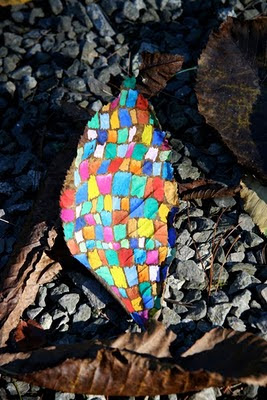fig. 73: a maple key with cartoonitus.
fig. 72: white-dot fungi fill every surface of a tree stump.

fig. 71: the tequila sunrise tree drops very happy leaves.

fig. 70: a locust seed pod adopts a snake pattern, probably to discourage attack by seed eating birds.
fig. 69: old-timers claim that counting the rings on peach leaves in fall predicts how many peaches you'll get next season.
fig. 67: the winged burning bush marks its leaves for exfoliation.
fig. 65: peak foliage is not always found on the trees.

fig. 64: blue bursts portend a long winter.
fig. 63: the rare "Sunset scallop" is purported to cure narcolepsy if put under the pillow of the afflicted.

fig. 61: On Fire Island, the Pines drop some very colorful cones.

fig. 55: certain leaves pay tribute to fallen friends with tattoos.
fig. 58: yellow remembers orange.
fig. 57: gingko leaves are individually beautiful but collectively stunning.
fig. 60: on some beaches, symbiosis does not always go hand in hand with mutualism.

















